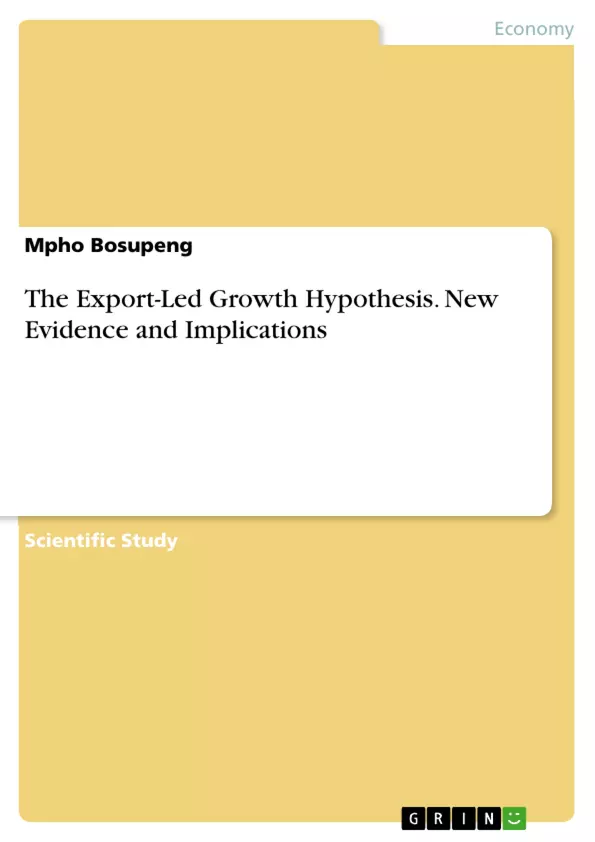Previous studies on economic growth have shown that countries that relied on exports to propel their economies have been successful in achieving robust economic growth. This study considers Botswana’s mineral exports production from 2003 Q1 to 2012 Q4 and relates each export commodity with the GDP. This study applies the Johansen co-integration test and the Granger causality test to determine the applicability of the export-led growth hypothesis for the Botswana economy. The co-integration test shows that there is long run co-movement between GDP and four of Botswana’s mineral exports namely: matte; diamonds; copper; nickel and soda ash. In addition, the Granger causality test shows that Botswana’s economy propels exports production. From these results, the study nullifies the export-led growth hypothesis and postulates that the Botswana economy rather follows the growth-driven exports hypothesis (GDE). The study further postulates recommendations and also potential areas of research.
Inhaltsverzeichnis (Table of Contents)
- Abstract
- Introduction
- Literature Review
- Research Hypotheses
- Data Description
- Methodology
- Cointegration Analysis
- Causality Analysis
- Hypotheses Test Results
- Trace Test Results
- Maximum Eigenvalue Test Results
- Causality Test Results
- Discussion
- Conclusion
- References
Zielsetzung und Themenschwerpunkte (Objectives and Key Themes)
This study examines the relationship between Botswana's mineral exports production and economic growth, specifically focusing on production quantities rather than export revenue. It aims to determine whether the export-led growth hypothesis (ELGH) applies to the Botswana economy. The study uses cointegration and Granger causality tests to analyze the long-run relationship and causal direction between mineral exports and GDP.
- The relationship between mineral exports and economic growth in Botswana.
- The applicability of the export-led growth hypothesis to Botswana.
- The role of production quantities in the ELGH.
- The potential for growth-driven exports (GDE) in Botswana.
- The implications of the findings for economic policy in Botswana.
Zusammenfassung der Kapitel (Chapter Summaries)
The study begins by providing an overview of the export-led growth hypothesis and its relevance to developing economies. It then reviews existing literature on the relationship between exports and economic growth, highlighting the limitations of previous studies that focus solely on export revenue. The study then presents its research hypotheses and describes the data used in the analysis. The methodology section outlines the cointegration and Granger causality tests used to examine the relationship between mineral exports and GDP. The results of the hypothesis tests are presented and discussed in detail, leading to the conclusion that the ELGH is not supported for Botswana. Instead, the study suggests that the Botswana economy may follow the growth-driven exports hypothesis. The paper concludes with recommendations for future research and policy implications.
Schlüsselwörter (Keywords)
The study focuses on the following key terms: export-led growth, growth-driven exports, mineral exports, cointegration, Granger causality, Botswana economy.
- Citation du texte
- Mpho Bosupeng (Auteur), 2015, The Export-Led Growth Hypothesis. New Evidence and Implications, Munich, GRIN Verlag, https://www.grin.com/document/299464



